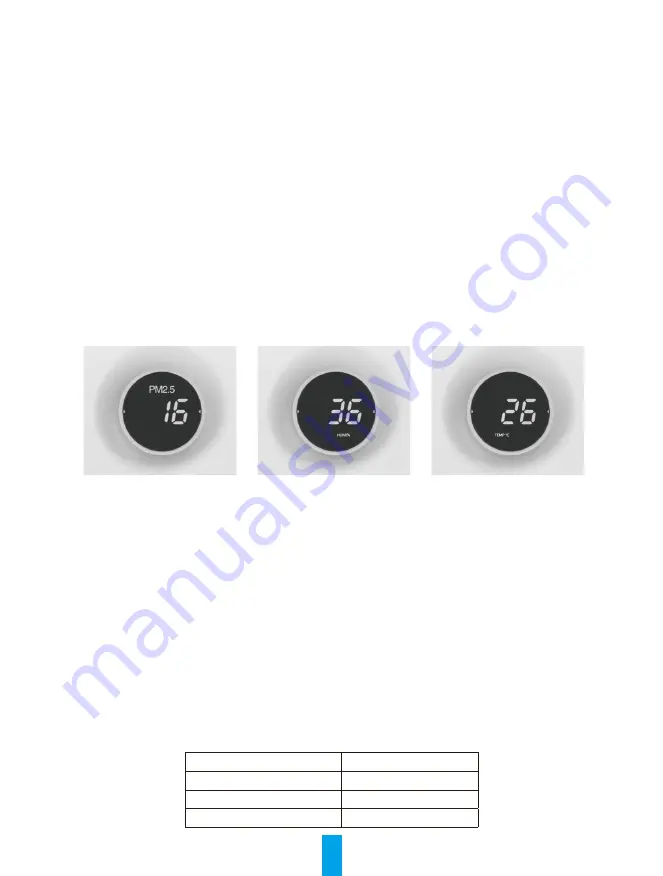
3
1. Cleanable Pre-Filter
Traps large particles such as human hair, pet dander and dust particles. Helps to extend the life of the HEPA
and Activated Carbon filters.
2. True HEPA Filter
Traps up to 95% of allergens and airborne contaminants down to 0.3 microns in size. These allergens include
lung damaging dust, mould spores, plant spores, pet dander and pollen.
3. Activated Carbon Filter
Neutralises odours and Volatile Organic Compounds (VOC’s) such as formaldehyde and benzene, as well as
other harmful fumes emitted by household products.
4. UV-C Light (254nm)
Inactivates microbes such as germs, viruses, fungi and bacteria.
Air Quality Indicator
Fine Particulate Matter
(PM2.5)
Relative Air Humidity in %
Temperature in °C
The digital display on the front of the air purifier indicates the current air quality by measuring the level of fine
particulate matter (PM2.5), indoor relative humidity, and indoor temperature.
Fine Particulate Matter (PM2.5)
PM2.5 refers to atmospheric particulate matter (PM) that have a diameter of less than 2.5 micrometers, which is
about 3% the diameter of a human hair. These particulate matter can come from various sources indoors, from
chemicals in cleaning supplies, building products, furniture and carpeting, to mould, bacteria, dust mites and even
from cooking. Studies have shown that inhaling too much fine particulate matter can cause health issues and
trigger or worsen chronic disease such as asthma, heart attack, bronchitis and other respiratory problems.
Due to the many adverse effects fine particles can inflict on a large number of people, PM2.5 is one of the major
pollutants closely monitored by health authorities around the world. The table below provides a rough indication of
what levels of PM2.5 are harmful:
μg/m³
Indoor air quality
<75
Good
76-150
Average
>151
Bad








